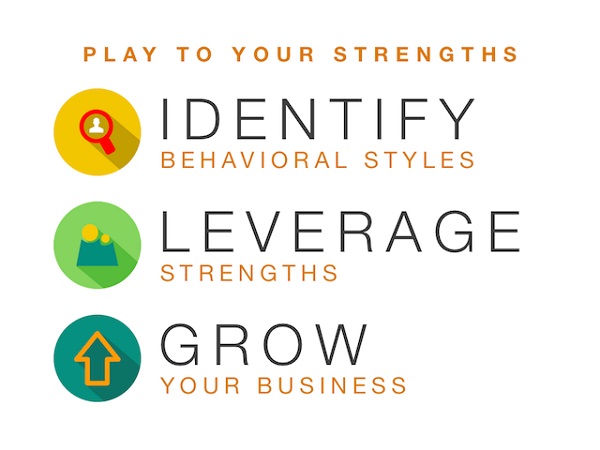There has been extensive research undertaken in recent years about the impact of diversity in the workplace. A study by McKinsey reveals that companies which promote gender and ethnic diversity are likely to perform better than their competitors financially.
Source: McKinsey
Research has also shown that generational diversity can create a more dynamic, productive and innovative workforce. While the impacts of gender, ethnic, and generational diversity in the workplace have been studied extensively, the influence of personality diversity on organizational success has not yet been fully explored.
Commonly accepted wisdom states that we work best with people with similar personalities. On the surface, this makes sense: we like working with those who see the world through a similar lens. Because of this, hiring managers tend to favor candidates who reflect their own traits, talents, reactions, and habits.
You might be asking why is this an issue? Surely if we hire people who remind us of ourselves, we know how they behave and how to motivate them? But it’s not that simple.
Hiring similar people tends to lead to a homogeneous workforce. And, just as age, gender and ethnic diversity can benefit your organization, so too can having a wide range of personalities in your team.
Why personality diversity benefits organizations
Picture your organization like a jigsaw puzzle: the puzzle pieces are your individual team members, each with distinct talents and personality traits. A plurality of personalities means a wider range of skills, experience and perspectives to draw from.
Improves the Balance
Many high-performing organizations advertise, for example, that they’re seeking “risk-takers” to join their team. However, your organization won’t survive if everyone is a risk-taker! You want some cautious individuals who prefer to weigh up the pros, cons and potential benefits before taking a risk.
Source: LinkedIn
Likewise, extroversion – being sociable, valuing teamwork and preferring to work with others – can be an asset. However, this should not come at the expense of also valuing introverts.
Balance is key. Balance means your organization is better equipped to consider all perspectives and angles before deciding on a course of action. This can only be a positive for your staff, clients, customers and company.
Feedback
Empathy is an important and often underrated value in the workplace. Empathy simply means understanding and sharing another person’s feelings – the ability to put yourself in their position. It makes people feel valued and contributes to a caring, nurturing working environment.
Source: Web Design Tips
Empathy is hugely important when providing feedback. Let’s say you have an employee who is difficult to manage or not meeting the standards of performance you expect. It can be tempting to have a more blunt, straightforward person go in with a heavy-handed approach and lay down the law.
However, showing empathy is much more likely to lead to positive results and lasting change. A diversity of personalities means you are more likely to have someone in your team who can give honest, constructive feedback while demonstrating kindness and understanding due to their ability to empathize with the difficult colleague.
Empathy is also important when it comes to receiving customer feedback. It can sting to be told your product or service did not meet expectations. However, empathizing with your customer’s experience gives you a real opportunity to fix the problem and keep their business. A diversity of personalities provides increased opportunities for empathy with a wider range of people, customers and colleagues alike.
Perspectives
Our perspective is the lens through which we view the world. Some people are great at looking at the big picture, while others focus on the small details. Some tend to see the positives in a situation (“glass half full”) while others see the potential problems and pitfalls (“glass half empty.”)
None of these perspectives are wrong, or inherently better or worse than any other. They are simply different. Different personalities working in the same team means the opportunity to see different perspectives or points of view.
Considering different perspectives can also help with problem solving. A mix of personalities ensures diverse perspectives on a problem, and members of your team may offer suggestions you would never have thought of. More ideas on the table means more opportunity for creative problem-solving which benefits your business, your team and your customers.
Engagement and productivity
What makes you get up in the morning? This question is always fascinating because no two people will answer in the same way. Different people have different motivations and their strengths often align with these.
When you assign tasks according to people’s strengths and motivations, your staff will be more engaged, more invested and more productive. For example, a highly analytical and detail-oriented individual will welcome a task that involves looking at data closely, while an outgoing and extroverted team member will enjoy people-facing tasks.
Source: Evan Fuchs
Imagine you are running a study on how people effectively utilize their time. Using data gathered using a time clock app, you identify which tasks are highly time consuming. A detail-oriented individual might suggest ways to reduce the time these tasks take, while a big picture thinker might look at whether elements can be changed or eliminated. Both of these approaches have the potential to increase engagement and improve productivity.
Many managers worry that putting individuals with very different personalities together creates the potential for conflict. However, what they miss is that there is also a tremendous potential for collaboration. “Different” does not have to mean “clashing”. In fact, a team with varied personalities can become greater than the sum of its individual parts. As a leader, it’s your job to leverage the different personalities within your team and drive them all towards a common goal.
How to improve personality diversity
So you’ve decided you want to increase personality diversity in your organization. But how do you actually do it?
Just like the racial, gender or age diversity in your team, building a more personality diverse culture requires a strategic approach and will not happen overnight. Your approach should be influenced by, and responsive to, your team’s current composition and your priorities going forwards.
Here are some possible ways to tackle this issue which you may want to consider:
Personality questionnaires
In order to understand how to grow personality diversity in your organization, you first need to understand the make-up of your existing team. Asking employees to take a personality quiz can help you discover their personalities as well as giving more insight into their strengths and weaknesses. Using this information, you can understand more about why your team members behave the way you do.
Source: The Engineering Manager
This serves two purposes. First, you can develop coaching and mentoring plans to help people develop and grow in their careers. This is good news for your employees’ work satisfaction, which leads to greater productivity and employee loyalty. Second, you can identify skill and personality gaps within your organization that your recruitment team can help fill.
Recruitment
Making your team more diverse and inclusive starts with recruitment. Recruiting for personality is slightly different from recruiting for skill, though the two go hand in hand. We are accustomed to seeing recruitment ads on landing pages that seek “self-starters” who are “detail-oriented”. This focus upon limited personality “buzzwords” means that your organization might be passing over swathes of amazing potential employees.
Not everyone wants to be put in positions where they have to make high-level decisions. Instead, they are more than glad to provide support to decision-makers in the form of data or analysis, and vice-versa.
It’s wise to align your recruitment policies with your overall organizational goals. For example, if your team’s collective indecisiveness is holding you back, maybe you could hire an operations manager who is not afraid of taking risks. In other words, notice where the gaps are and make an effort to fill them.
Culture
Improving personality diversity might mean a major overhaul of your organizational culture, especially if you’ve been hiring similar people for a long time. Remind yourself that there is no such thing as a “typical team member”. Instead, your organization must build a culture where diversity of personality, viewpoint and experience is respected.
Building an organizational culture where personality diversity is recognized and rewarded doesn’t happen overnight. A sudden cultural change can result in resistance or even hostility from long-time team members.
Change is likely to be gradual. Get your existing employees’ buy-in at every stage of the process. Be open with your team about why personality diversity is crucial.
When you bring on a new hire with different personality traits to the people you usually recruit, you will need to take extra steps to ensure they feel welcome. At the same time, ensure that your more tenured team members know that they are still highly valued.
In time, with positive reinforcement and strong leadership, even the most cynical team member will come to understand the value of personality diversity. This is when you know that the culture shift has been successful.
In a nutshell…
Having a mix of personalities in your organization means that you can make better decisions based upon a wider range of perspectives. It also means that your employees more accurately represent the diversity of your customer-base, leading to a greater ability to attract and retain customers through understanding and empathy.
Personality diversity also helps create a better working environment because everyone feels they have a role to play. Showing that both their personality and skills are valued is the key to recruiting and retaining talented, loyal and productive employees.
Identifying the personality gaps in your organization is just as important as identifying the talent gaps. Shifting to a business model where diverse personalities are valued requires a shift in the way recruitment and talent development are done. It might also require a cultural shift, which will be an ongoing process to create and maintain.
Growing the personality diversity of your organization is not a quick fix and it might feel like a lot of work. However, the payoff is more than worth it. A well-managed diverse workforce is a happy and productive one. It is your job to lead the way, valuing diversity in all you do and creating opportunities for cooperation and collaboration.











Leave A Comment